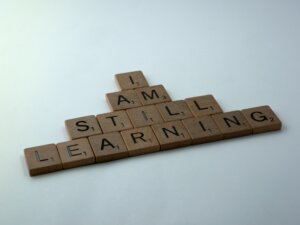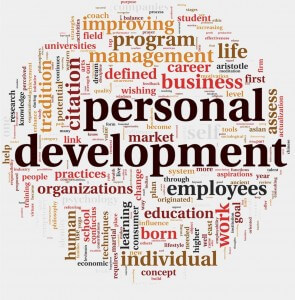It’s easy to think of the trainer as the leader–at least in the moment, but he or she is a leader in other ways, too–keyed to the human factor that makes the company work and its people resource rewarded and fulfilled. The trainer/leader listens to his audience and works with them. He or she teaches and guides them.

But who’s guiding and teaching the trainer/leader? Hopefully there is a mentor or supervisor who is aware of the work the trainer does in his department. Just as the leader has certain responsibilities to his people, the trainer also has a responsibility to check the work he or she is doing, and look for ways to improve it. He or she represents the operational side and the human side of the company at the same time–just as a leader, but it’s not as obvious.
The trainer is actually in a better position than the leader to influence workers because he or she is working at establishing a rapport and conveying information that will help them succeed. Spending time getting to know your people (your audience) as a leader is no different. With that comes, getting them to know you as leader. Doesn’t it make sense, the trainer is perceived the same way? Think, “sensei,” in Japanese. It means “teacher or master” but it has an elevated status, something more akin to a leader–certainly a most experienced and learned one.
Today, American business and industry have adapted the Japanese term. Sensei is often used to refer to an outside, third-party expert who coaches or advises on operational and organizational excellence.
Besides taking the glowing evaluations all to heart and blowing up one’s head, there is another simple solution. Leaders who do it constantly put themselves in a state of check–not checkmate, by reflection on how what they do affects others, both good and bad decisions. Just as the training evaluations don’t tell the whole story, neither do company numbers.
According the the Human Services Leadership Institute in its Effective Human Services Leader newsletter, “self-reflection enables you to evaluate your approach on a daily basis and look for opportunities to maximize employee, and department performance.” Why is it important? “Self-reflection is a critical skill used within the helping relationship.”
Self-reflection is one way that leaders can monitor and assess their own performance, and look for ways to improve. For the trainer, the process becomes a self-assessment tool that in one way can keep them from being too impressed with their own “press” and be constantly thinking about what works and what doesn’t with their trainees or charges.

The process for leaders is simple:
- Be Aware of Your Behaviors
- Always Assess Performance
- Be Receptive
Trainers, keep in mind this is your behavior, your performance and your attention.
Be aware of your behaviors lest you forget you have some characteristics you’d like to change that you can change that will make you a more effective trainer. Be aware your behavior is constantly under scrutiny by those in your charge. You are the model right in front of them. They think company; they see you. They think boss or executives, they think you. If you are cold, inflexible, gruff, unpleasant, that is the example you are setting for trainee behavior upon his or her return to work. Does your manner affect your presentation style? Or is it somehow tied to what engages your audience?

Always assess your performance, regardless of the evaluations. When you look at the evaluations, don’t mistake congeniality for efficiency; you learn nothing by looking too good to be true. Ask for honest appraisals in training. Read between the lines and look for items not addressed. The lack of a response, when there could be one, means maybe they did not want to give a negative response. However, don’t agonize over it all; self-reflection is merely a tool to ensure you are aware of each day’s performance and look for ways to improve.
Being receptive to criticism is key to improvement. Being receptive to praise doesn’t hurt either; it means you’re doing something right. Listening is important. Noting that maybe that’s a skill you could improve on (most of us need to) will gain you many points in the rapport department. Is your style bordering on pedagogy rather than andragogy when you really want the opposite? Are you facilitating learning or teaching subjects?
In the adult learning debate of andragogy versus pedagogy, the role of the trainer as leader is most obvious in the adult learning style, as opposed to the teacher who is viewed in a more authoritative mold. A trainer who works with adults is acting in a leadership role, facilitating self-learning, encouraging self analysis, and setting a standard for self evaluation.
Using self-reflection as a tool to assess the human factor, either for trainee, trainer or leader is beneficial to all.
—
For more resources about training, see the Training library.
If your interested, you can find other articles I have written on subjects other than training and development subjects on my website. Leave any comments here or there. Hey, why not follow me on Twitter? For a look at the human side of training from my Cave Man perspective, please check out my book, The Cave Man Guide to Training and Development. Happy training.
 Sections of this topic
Sections of this topic















